Say Yes to Education (SYTE) is a scholarship guarantee program that pledges to young children from disadvantaged backgrounds a fully paid, post-secondary education along with academic and social supports that follow children and their families throughout their elementary and high school careers. Since its inception in 1987, the SYTE program has ‘adopted’ cohorts of students in Philadelphia, Hartford, CT, Cambridge, MA, and New York City. Research for Action (RFA) has conducted two evaluations of the Philadelphia SYTE chapter. This report shares the results of the second evaluation conducted in partnership with ANALYTICA, Inc. The evaluation used propensity score matching to equate SYTE students with a comparison group in kindergarten and looked at academic and behavioral outcomes in first, second, third fourth and fifth grades. The evaluation defined impact according to educationally meaningful program effect sizes (d =.25). Results showed that most SYTE students were on track to graduate-few showed early warning signs of dropping out although their academic performance on standardized tests in fifth grade was worriesome. The group performed better than a comparison group, however, in some subjects each year although there were no differences in attendance or behavioral indicators in most years. Girls performed outperformed the comparison group each year in multiple subject areas on standardized tests, most notably science, while boys only outperformed the comparison group twice; 2nd grade spelling and 5th grade math. SYTE students were also more likely to stay in the school district of Philadelphia, have been identified for receiving special education services and services for giftedness and had fewer unexcused absences (though more excused absences) suggesting that parents were communicating with the school when the child was absent. There were several limitations to the study most notably, the small sample size, attrition of the comparison group from the SDP and missing data in the files obtained from the SDP. The report discusses ways in which these limitations were handled and implications for future research.
Making Progress: Longitudinal Outcomes Evaluation of the Say Yes to Education Program Kindergarten – 5th Grade
Herb M. Turner, III , Jason Schoeneberger , Tracey A. Hartmann , Eva Gold
Date: May 2007
Related Publications
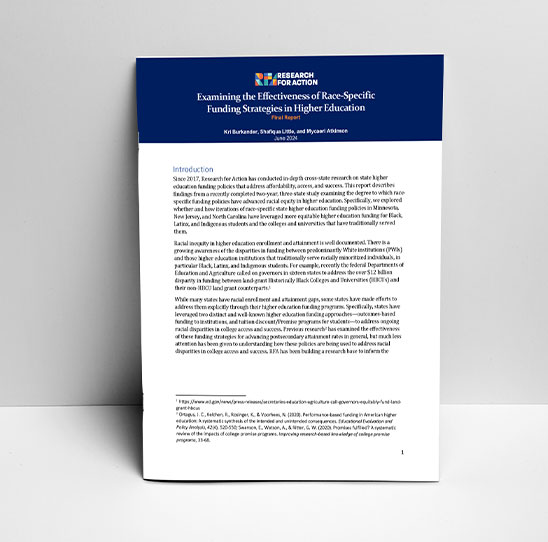
Publication
Examining the Effectiveness of Race-Specific Funding Strategies in Higher Education
Kri Burkander, Shafiqua Little, Mycaeri Atkinson
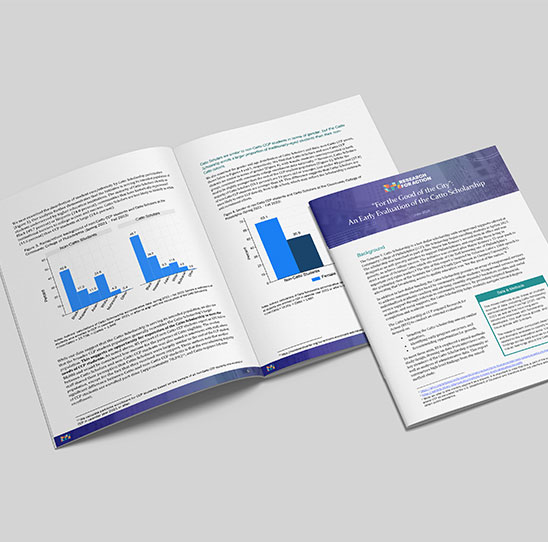
Publication
“For the Good of the City” An Early Evaluation of the Catto Scholarship
Kri Burkander, Karin Gegenheimer, Alita Robinson
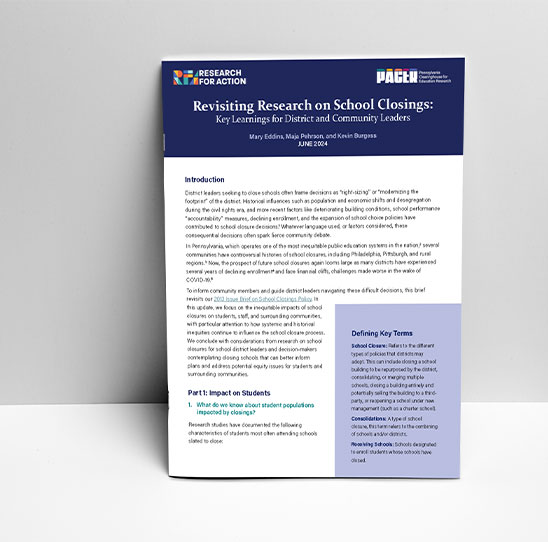
Publication
Revisiting Research on School Closings: Key Learnings for District and Community Leaders
Mary Eddins, Maja Pehrson, Kevin Burgess
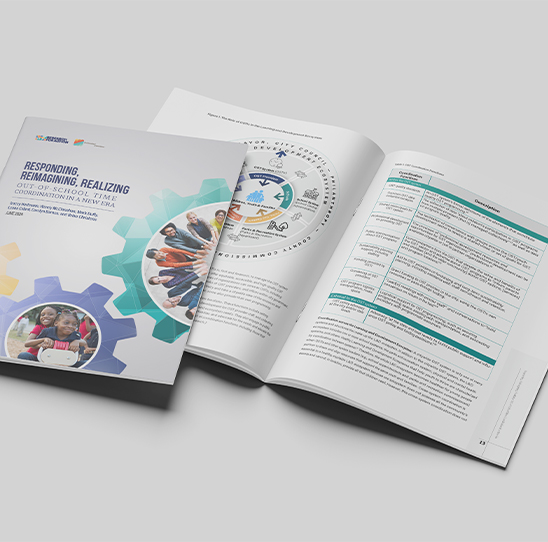
Publication
Responding, Reimagining, Realizing: Out-of-School Coordination in a New Era
Tracey A. Hartmann, Wendy McClanahan, Mark Duffy, Leana Cabral, Carolyn Barnes, Ph.D, Brian Christens, Ph.D
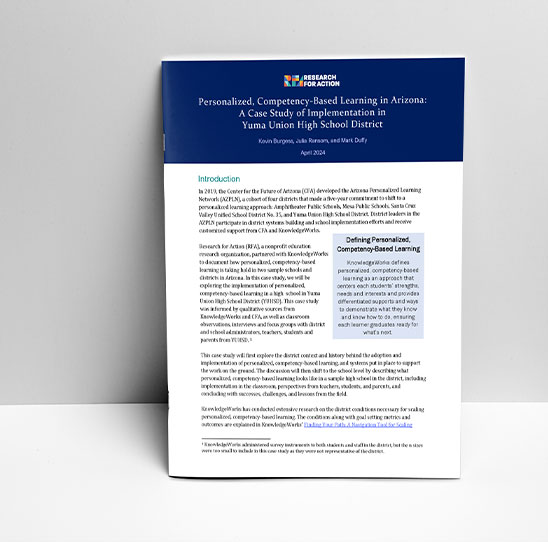
Publication
Personalized, Competency-Based Learning in Arizona: A Case Study of Implementation in Yuma Union High School District
Kevin Burgess, Julia Ransom, Mark Duffy

Publication
Personalized, Competency-Based Learning in Arizona: A Case Study of Implementation in an Elementary School in Santa Cruz Valley Unified School District 35
Julia Ransom, Kevin Burgess, Mark Duffy
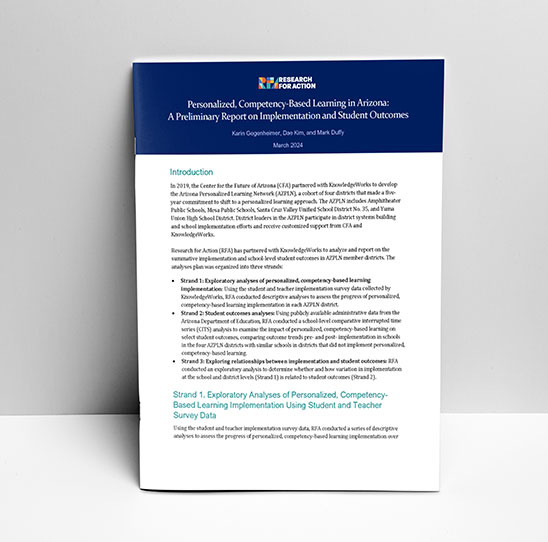
Publication
Personalized, Competency-Based Learning in Arizona: A Preliminary Report on Implementation and Student Outcomes
Karin Gegenheimer, Dae Y. Kim, Mark Duffy
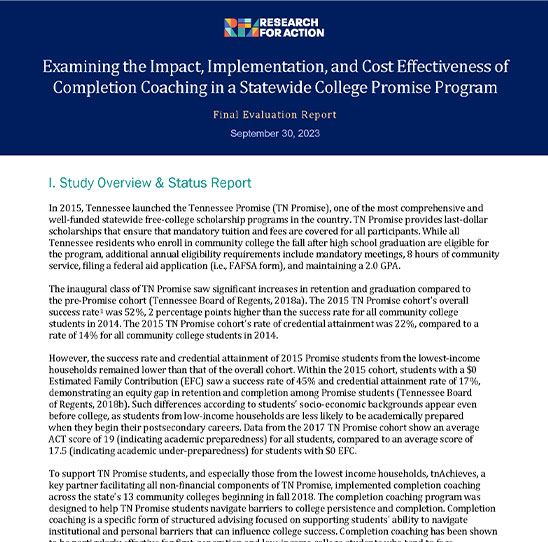
Publication
Examining the Impact, Implementation, and Cost Effectiveness of Completion Coaching in a Statewide College Promise Program
Dae Y. Kim, Karin Gegenheimer
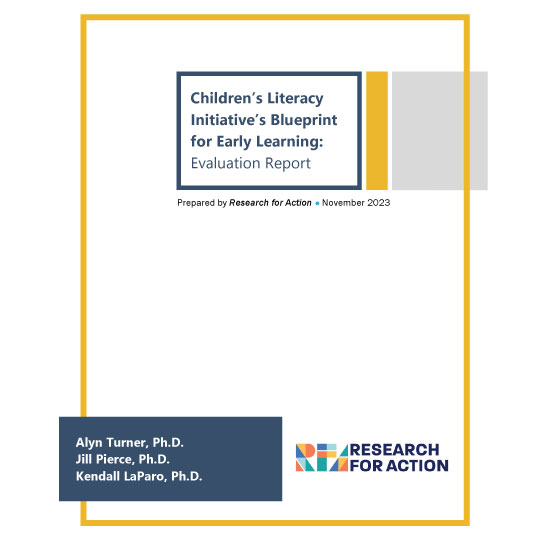
Publication
Children’s Literacy Initiative’s Blueprint for Early Learning: Evaluation Report
Alyn Turner, Jill Pierce, Kendall LaParo

Publication
Virtual Approaches Hold Promise for Expanding Afterschool Art Programming
Wendy McClanahan, Tracey A. Hartmann

Publication
Small but Mighty: Lessons from Black Teachers’ Experiences in Allegheny County
Siettah Parks, Kevin Burgess, Leana Cabral, Mary Eddins, Alita Robinson
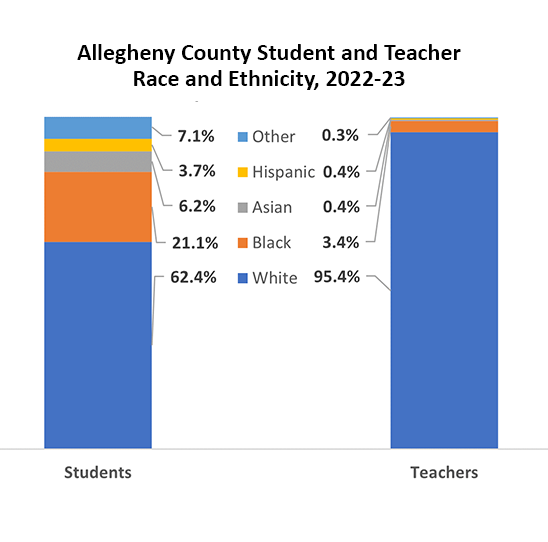
Publication
Allegheny County Teacher and Student Demographics: 2022-23 Update
Mary Eddins, David Lapp, Anna Shaw-Amoah